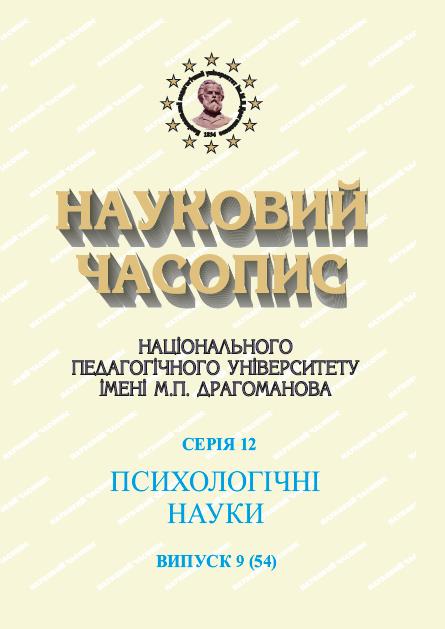ANALYSIS OF STANDARDIZED PSYCHODIAGNOSTIC INSTRUMENTS IN THE FIELD OF GENDER RESEARCH
DOI:
https://doi.org/10.31392/NPU-nc.series12.2020.9(54).07Keywords:
explicit method, implicit method, gender, gender studies, gender methodological tools.Abstract
The article deals with the analysis of methodological tools used in the field of gender studies. A theoretical analysis of the possibilities of using the methods and techniques used in Western psychology is conducted. In particular, the basic techniques currently used in the psychology of gender studies are presented: Bem Sex-Role Inventory (BSRI), Implicit Association Test (IAT), Gender Bias Quiz. It is emphasized that when exploring gender sensitive issues (gender inequality, gender discrimination, gender imbalance, etc.), it is necessary to combine explicit research methods (direct questions, direct scaling, direct assessment) with implicit (obtaining necessary data based on indirect questions). Among the techniques analyzed in the paper, explicit ones include Bem Sex-Role Inventory (BSRI), Gender Bias Quiz; implicit methods include Implicit Association Test (IAT). The necessity of using reliable methods in the field of studying gender issues is actualized in the work (in particular, in the study of psychological features of a person's attitude to gender inequality). Of particular importance are methodical techniques and techniques that allow to obtain information provided by the respondent beyond the effect of social approval. Research has shown that in the study of gender issues (gender stereotypes, attitudes toward gender inequality, gender imbalance, etc.) it is important to combine methods that allow to obtain both quantitative indicators (e.g., the level of gender bias) and qualitative ones that can be obtained using other methods, such as the content analysis method.
References
- Auster, C. J., & Ohm, S. (2000). Masculinity and femininity in contemporary American society: A reevaluation using the Bem Sex-Role Inventory. Sex Roles, 43, 499-
- Bem S. (1993). The Lenses of Gender: Transforming the Debate on Sexual Inequality. Yale University Press.
- Ferrer-Pérez, V. A. (2014). The measure of the masculinity–femininity construct today: Some reflections on the case of the Bem Sex Role Inventory. Revista de Psicología Social 29(1): 180-207, 2014. DOI: 10.1080/02134748.2013.878569
- Gender, Bias Quiz (2015). The Institutional Scorecard for Gender Mainstreaming / written by K. Tezare; edited by R. Wong. Commonwealth of Learning (COL). Retrieved from URL:http://oasis.col.org/bitstream/handle/11599/1740/2015_COL_Gender-Bias-Quiz.pdf?sequence=3&isAllowed=y
- Hill, C. (2016). Barriers and Bias: The Status of Women in Leadership. Retrieved from URL: https://www.aauw.org/research/barriers-and-bias/
- Lacan, J. (1972). On feminine sexuality: the limits of love and knowledge: Book XX : Encore, 1972.
- Project Implicit / Implicit Association Test (IAT). Retrieved from URL: https://implicit.harvard.edu/implicit/aboutus.html
- Taylor, J.S., Bogdan, R. & DeVault, L.M. (2015). Introduction to Qualitative Research Methods. A Guidebook and Resource. NJ: John Wiley & Sons.
- Webb,J. (1973). Unobtrusive Measures: Nonreactive research in the social sciences. Chicago: McNally.

